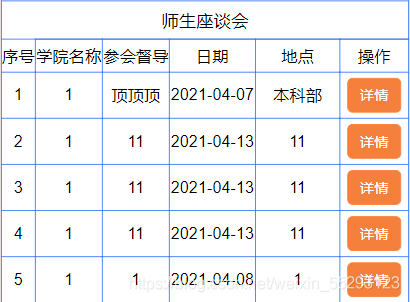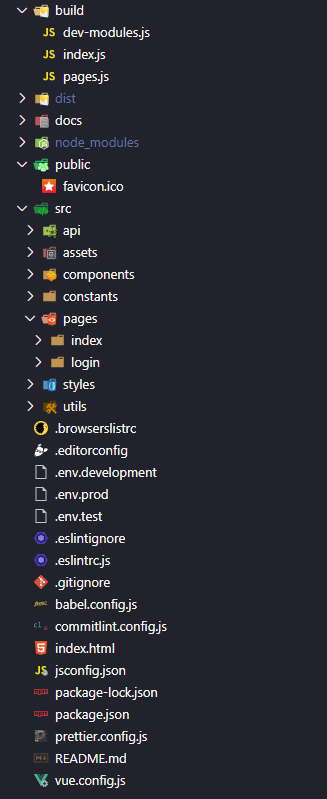目录
- 前言
- 浏览器编译版本
- 本地预编译版本
- 总结
- 参考
前言
vue3 沙箱主要分两种
- 浏览器编译版本,浏览器版本是使用with语法加上proxy代理拦截
- 本地预编译版本,通过在模版预编译阶段转换阶段,使用转换插件transformExpression将非白名单标识符挂在在组件代理对象下
浏览器编译版本
render 函数编译结果
<div>{{test}}</div>
<div>{{Math.floor(1)}}</div>
to
const _Vue = Vue;
return function render(_ctx, _cache, $props, $setup, $data, $options) {
with (_ctx) {
const {
toDisplayString: _toDisplayString,
createVNode: _createVNode,
Fragment: _Fragment,
openBlock: _openBlock,
createBlock: _createBlock,
} = _Vue;
return (
_openBlock(),
_createBlock(
_Fragment,
null,
[
_createVNode("div", null, _toDisplayString(test), 1 /* TEXT */),
_createVNode(
"div",
null,
_toDisplayString(Math.floor(1)),
1 /* TEXT */
),
],
64 /* STABLE_FRAGMENT */
)
);
}
};
从上面的代码,我们能发现,变量标识符没有增加前缀,只是用with语法包裹了一下,延长作用域链,那么是如何做到 js 沙箱拦截的呢?例如变量test,理论上说,当前作用域链没有test变量,变量会从上一层作用域查找,直到查找到全局作用域,但是,实际上只会在_ctx上查找,原理很简单,_ctx是一个代理对象,那么我们如何使用Proxy做拦截,示例代码如下:
const GLOBALS_WHITE_LISTED =
"Infinity,undefined,NaN,isFinite,isNaN,parseFloat,parseInt,decodeURI," +
"decodeURIComponent,encodeURI,encodeURIComponent,Math,Number,Date,Array," +
"Object,Boolean,String,RegExp,Map,Set,JSON,Intl,BigInt";
const isGloballyWhitelisted = (key) => {
return GLOBALS_WHITE_LISTED.split(",").includes(key);
};
const hasOwn = (obj, key) => {
return Object.prototype.hasOwnProperty.call(obj, key);
};
const origin = {};
const _ctx = new Proxy(origin, {
get(target, key, reciever) {
if (hasOwn(target, key)) {
Reflect.get(target, key, reciever);
} else {
console.warn(
`Property ${JSON.stringify(key)} was accessed during render ` +
`but is not defined on instance.`
);
}
},
has(target, key) {
// 如果是 全局对象 返回false,不触发get 拦截,从上一层作用域查找变量
// 如果不是 全局对象 返回true,触发get 拦截
return !isGloballyWhitelisted(key);
},
});
代码很简单,为什么这么简单的代码就能做到拦截?
因为 with 语句会触发 has 拦截,当 has 返回 true,就会 触发代理对象 get 拦截,如果返回 false, 则代理对象 get 拦截不会触发,变量不在当前代理对象查找,直接查找更上一层作用域
本地预编译版本
<div>{{test}}</div>
<div>{{Math.floor(1)}}</div>
to
import {
toDisplayString as _toDisplayString,
createVNode as _createVNode,
Fragment as _Fragment,
openBlock as _openBlock,
createBlock as _createBlock,
} from "vue";
export function render(_ctx, _cache, $props, $setup, $data, $options) {
return (
_openBlock(),
_createBlock(
_Fragment,
null,
[
_createVNode("div", null, _toDisplayString(_ctx.a), 1 /* TEXT */),
_createVNode(
"div",
null,
_toDisplayString(Math.floor(1)),
1 /* TEXT */
),
],
64 /* STABLE_FRAGMENT */
)
);
}
从上面的代码我们可以发现,非白名单标识符都添加了_ctx 变量前缀,那么是如何做到的呢?当本地编译 template 时,处于转换阶段时会对 变量表达式节点NodeTypes.SIMPLE_EXPRESSION进行添加前缀处理,示例代码如下:
const GLOBALS_WHITE_LISTED =
"Infinity,undefined,NaN,isFinite,isNaN,parseFloat,parseInt,decodeURI," +
"decodeURIComponent,encodeURI,encodeURIComponent,Math,Number,Date,Array," +
"Object,Boolean,String,RegExp,Map,Set,JSON,Intl,BigInt";
const isGloballyWhitelisted = (key) => {
return GLOBALS_WHITE_LISTED.split(",").includes(key);
};
const isLiteralWhitelisted = (key)=>{
return 'true,false,null,this'.split(',').includes(key)
}
export function processExpression(
node
) {
const rewriteIdentifier = (raw) => {
return `_ctx.${raw}`
}
const rawExp = node.content
if (isSimpleIdentifier(rawExp)) {
const isAllowedGlobal = isGloballyWhitelisted(rawExp)
const isLiteral = isLiteralWhitelisted(rawExp)
if (!isAllowedGlobal && !isLiteral) {
node.content = rewriteIdentifier(rawExp)
}
return node
}
当然上面的代码只是简化版本,原版插件还做了精确到了__props $setup,减短变量查询路径,提高性能,还有通过babel编译复杂表达式比如:箭头函数。
总结
整个 vue3 js 沙箱机制就解释结束了,当初浏览器编译版本困扰了我很久,因为不知道 has 可以拦截 with 语句变量查询
参考
Proxy handler.has
说说 JS 中的沙箱
动手写 js 沙箱
到此这篇关于详解vue3 沙箱机制的文章就介绍到这了,更多相关vue3 沙箱机制内容请搜索NICE源码以前的文章或继续浏览下面的相关文章希望大家以后多多支持NICE源码!













